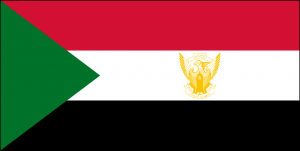Language/Sudanese-arabic/Grammar/Adjectives
Hi Sudanese Arabic learners! 😊
In this lesson, we will learn about adjectives in Sudanese Arabic. Adjectives are essential in describing nouns and pronouns. They provide us with more information about the noun, such as its color, size, shape, and characteristics.
Introduction[edit | edit source]
In Sudanese Arabic, adjectives come after the noun they describe. Unlike in English, adjectives in Sudanese Arabic do not change their form to agree with the noun's gender or number.
For instance, if we want to describe a car that is big, we would say "سيارة كبيرة" (siyaara kabiira), which literally means "car big." In this example, "كبيرة" (kabiira) is the adjective describing the car.
In this lesson, we will explore how adjectives function in Sudanese Arabic and their different forms. We will provide examples in English and Sudanese Arabic to illustrate how adjectives work in context.
Don't miss the chance to check out these pages as you wrap up this lesson: Negation, Plurals & Nouns.
Adjectives Forms[edit | edit source]
Adjectives in Sudanese Arabic take on different forms depending on their position in the sentence. There are two types of adjectives: definite and indefinite.
Definite Adjectives[edit | edit source]
Definite adjectives in Sudanese Arabic are those that are specific and known to both the speaker and the listener. They come after the noun and do not take any article.
Here is an example:
| Sudanese Arabic | Pronunciation | English |
|---|---|---|
| بيت كبير | bayt kabiir | big house |
In the example above, "كبير" (kabiir) is the definite adjective describing the noun "بيت" (bayt) which means "house."
Note that there is no article before the adjective "كبير" (kabiir) when used with a definite noun.
Indefinite Adjectives[edit | edit source]
Indefinite adjectives in Sudanese Arabic are those that are not specific or known to both the speaker and the listener. They usually come before the noun and take the "الـ" (al) article.
Here is an example:
| Sudanese Arabic | Pronunciation | English |
|---|---|---|
| البيت الكبير | albayt alkabiir | a big house |
In the example above, "الكبير" (alkabiir) is the indefinite adjective describing the noun "البيت" (albayt) which means "house."
Note that the article "الـ" (al) appears before the adjective "كبير" (kabiir) when used with an indefinite noun.
Adjective Agreement[edit | edit source]
Unlike in English, adjectives in Sudanese Arabic do not change their form to agree with the noun's gender or number. However, if the adjective comes before the noun, it adopts the gender of the noun it describes.
Here is an example:
| Sudanese Arabic | Pronunciation | English |
|---|---|---|
| باب واسع | baab waasi | wide door (masculine noun) |
| نافذة واسعة | nafZa wastha | wide window (feminine noun) |
In the example above, the adjective "واسع" (waasi) which means "wide", adopts the gender of the noun it describes.
In the first row, the noun "باب" (baab) is masculine, so the adjective "واسع" (waasi) remains in its basic form. The second row, the noun "نافذة" (nafZa) is feminine, so the masculine form of the adjective changes to the feminine form "واسعة" (waasiya).
Comparative and Superlative Adjectives[edit | edit source]
Like in English, adjectives in Sudanese Arabic have a comparative and superlative form. To form the comparative, we add the particle "أكثر" (akthar) before the adjective. To form the superlative, we add the particle "الأكثر" (alakthar) before the adjective.
Here is an example:
| Sudanese Arabic | Pronunciation | English |
|---|---|---|
| بيت كبير | bayt kabiir | big house |
| البيت أكبر | albait akbar | the house is bigger |
| البيت الأكبر | albait alakbar | the house is the biggest |
In the example above, we used the adjective "كبير" (kabiir) to describe the house. To say "the house is bigger," we added "أكثر" (akthar) before the adjective to make it "أكبر" (akbar). To say "the house is the biggest," we added "الأكثر" (alakthar) before the adjective to make it "الأكبر" (alakbar).
Dialogue[edit | edit source]
To help you understand how adjectives work in Sudanese Arabic, here is a dialogue:
- Person 1: هذا الثوب جديد (hatha al thawb jadiid) (This dress is new)
- Person 2: لكن هذا الثوب قديم (lakin hatha al thawb qadiim) (But this dress is old)
Conclusion[edit | edit source]
In conclusion, adjectives play an essential role in describing nouns and pronouns in Sudanese Arabic. They come after the noun they describe and do not change their form to agree with the noun's gender or number. Adjectives also have definite and indefinite forms, and they can be comparative and superlative.
We hope this lesson has helped you understand how adjectives work in Sudanese Arabic. To improve your Sudanese Arabic Grammar, you can also use the Polyglot Club website. Find native speakers and ask them any questions!
➡ If you have any questions, please ask them in the comments section below.
➡ Feel free to edit this wiki page if you think it can be improved. 😎
Having concluded this lesson, consider checking out these related pages: Say Hello and Greetings in Sudanese Arabic, Future Tense & Gender.

